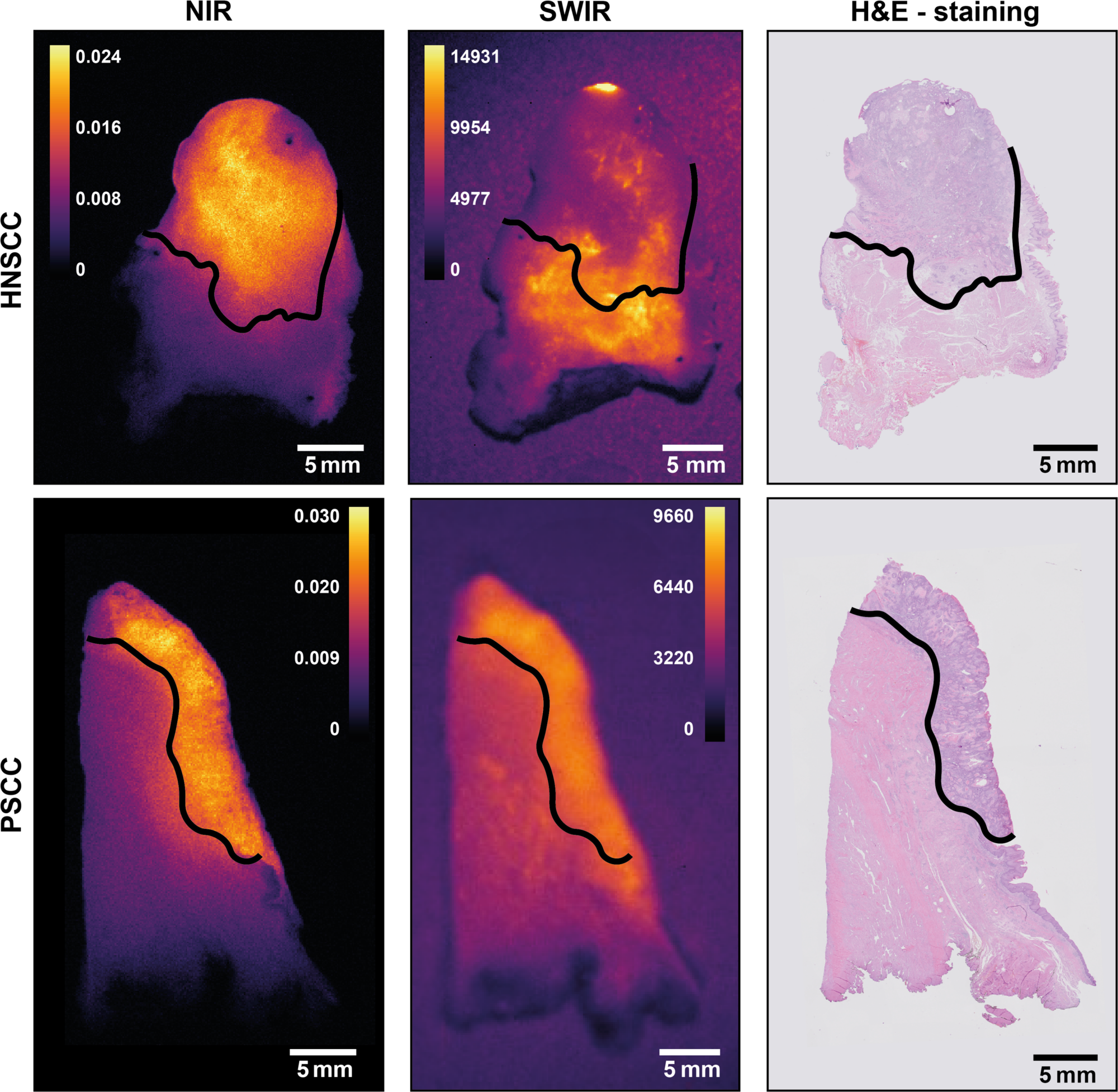New publication by Bas Keizers and Thomas S. Nijboer in Journal of Biomedical Optics

Our latest publication by Bas Keizers and Thomas S. Nijboer et al. entitled ‘Systematic comparison of fluorescence imaging in the near-infrared and shortwave-infrared spectral range using clinical tumor samples containing cetuximab-IRDye800CW can be found here.
Abstract
Significance
Shortwave-infrared (SWIR) imaging is reported to yield better contrast in fluorescence-guided surgery than near-infrared (NIR) imaging, due to a reduction in scattering. This benefit of SWIR was shown in animal studies, however not yet in clinical studies with patient samples.
Aim
We investigate the potential benefit of SWIR to NIR imaging in clinical samples containing cetuximab-IRDye800CW in fluorescence-guided surgery.
Approach
The potential of the epidermal growth factor-targeted NIR dye cetuximab-IRDye800CW in the shortwave range was examined by recording the absorption and emission spectrum. An ex vivo comparison of NIR and SWIR images using clinical tumor samples of patients with penile squamous cell carcinoma (PSCC) and head and neck squamous cell carcinoma (HNSCC) containing cetuximab-IRDye800CW was performed. The comparison was based on the tumor-to-background ratio and an adapted contrast-to-noise ratio (aCNR) using the standard of care pathology tissue assessment as the golden standard.
Results
Based on the emission spectrum, cetuximab-IRDye800CW can be detected in the SWIR range. In clinical PSCC samples, overall SWIR imaging was found to perform similarly to NIR imaging (NIR imaging is better than SWIR in the 2/7 criteria examined, and SWIR is better than NIR in the 3/7 criteria). However, when inspecting HNSCC data, NIR is better than SWIR in nearly all (5/7) examined criteria. This difference seems to originate from background autofluorescence overwhelming the off-peak SWIR fluorescence signal in HNSCC tissue.
Conclusion
SWIR imaging using the targeted tracer cetuximab-IRDye800CW currently does not provide additional benefit over NIR imaging in ex vivo clinical samples. Background fluorescence in the SWIR region, resulting in a higher background signal, limits SWIR imaging in HNSCC samples. However, SWIR shows potential in increasing the contrast of tumor borders in PSCC samples, as shown by a higher aCNR over a line.
Keywords: optical imaging, fluorescence-guided surgery, fluorescence molecular imaging, near-infrared imaging, shortwave-infrared imaging, contrast-to-noise ratio
